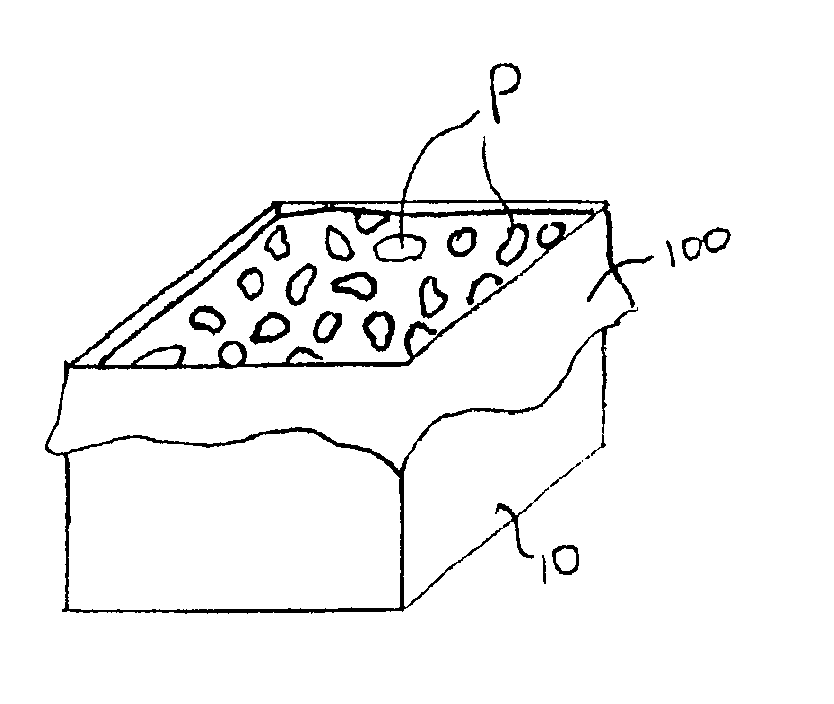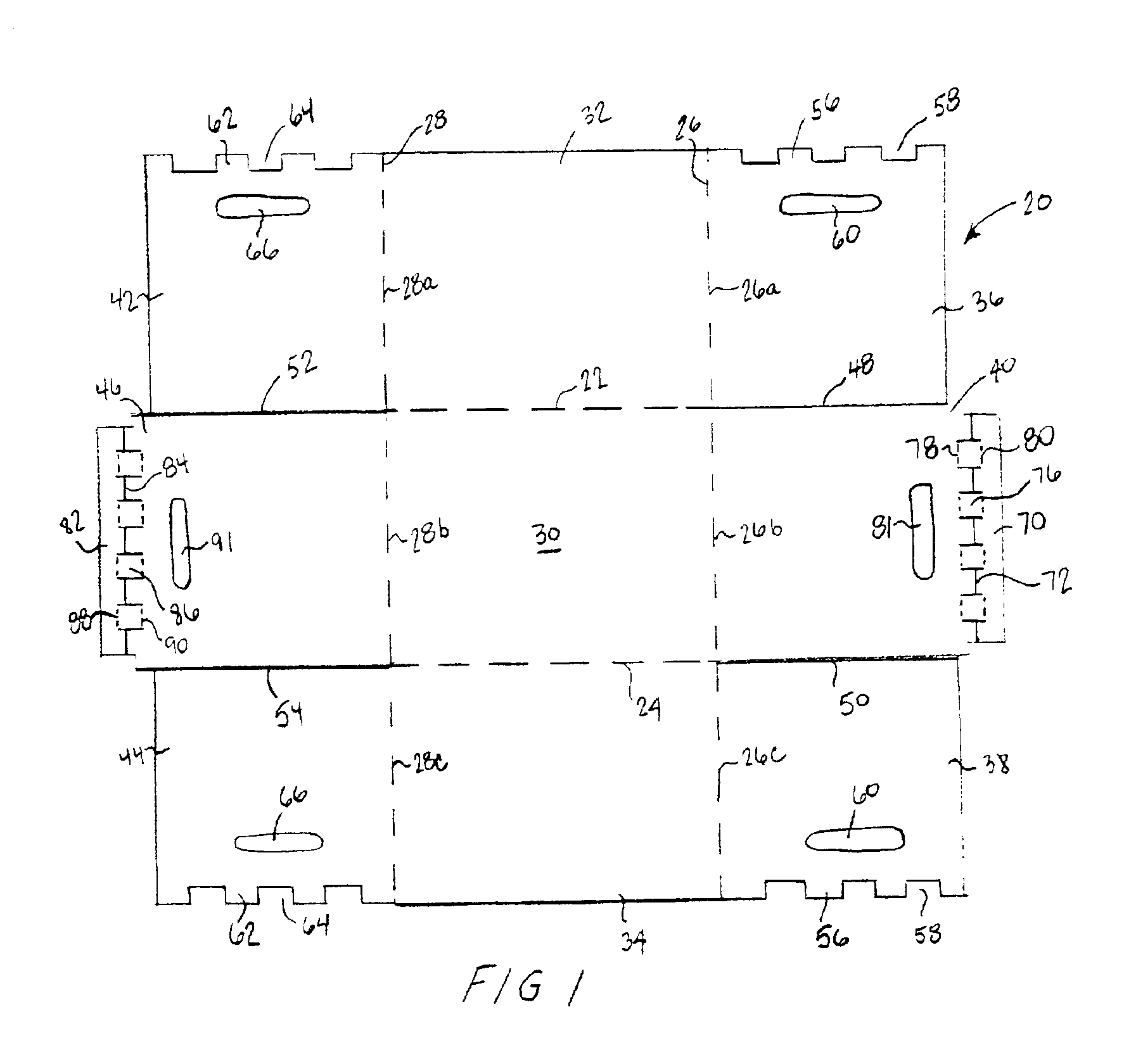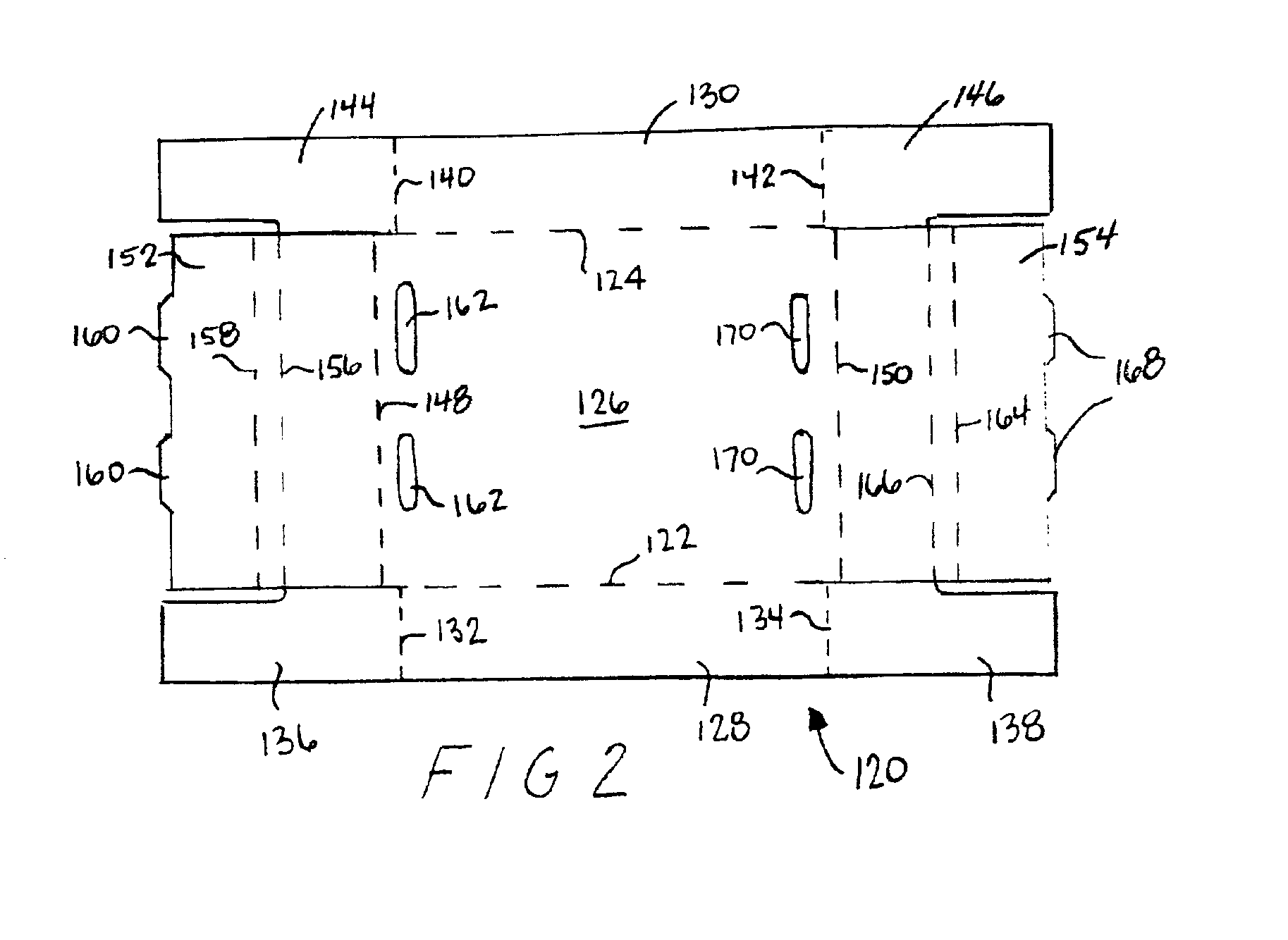Method of packing and shipping pickles
a technology applied in the field of packing and shipping pickles, can solve the problems of affecting the quality of pick affecting the quality of pickles in the first layer, so as to reduce the cost of disposal, reduce the relative ease of disposal of cardboard boxes, and avoid the effect of affecting the quality of pickles
- Summary
- Abstract
- Description
- Claims
- Application Information
AI Technical Summary
Benefits of technology
Problems solved by technology
Method used
Image
Examples
Embodiment Construction
The methods of the present invention are described herein in connection with the pickling and shipping of cucumbers. However, it will be appreciated that the inventive aspects of these methods can readily be applied to processes in which other pickle stock is pickled in a brine or similar solution. In addition to cucumbers, such pickle stock may include fruits and vegetables such as green tomatoes, beets, cauliflower, pears and peaches. However, the pickling of cucumbers is the most prevalent.
The production of pickles from cucumbers in accordance with the present invention can generally be carried out using many of the conventional process steps known in the art. Generally, the process begins with whole, fresh cucumbers. The cucumbers as received by the pickle manufacturer may have been previously sorted by the supplier to fall within a certain size range. The cucumbers are then passed through a washing step to remove dirt and debris from their outer surfaces. If desired, the cucumb...
PUM
| Property | Measurement | Unit |
|---|---|---|
| volume | aaaaa | aaaaa |
| volume | aaaaa | aaaaa |
| height | aaaaa | aaaaa |
Abstract
Description
Claims
Application Information
 Login to View More
Login to View More - R&D
- Intellectual Property
- Life Sciences
- Materials
- Tech Scout
- Unparalleled Data Quality
- Higher Quality Content
- 60% Fewer Hallucinations
Browse by: Latest US Patents, China's latest patents, Technical Efficacy Thesaurus, Application Domain, Technology Topic, Popular Technical Reports.
© 2025 PatSnap. All rights reserved.Legal|Privacy policy|Modern Slavery Act Transparency Statement|Sitemap|About US| Contact US: help@patsnap.com



